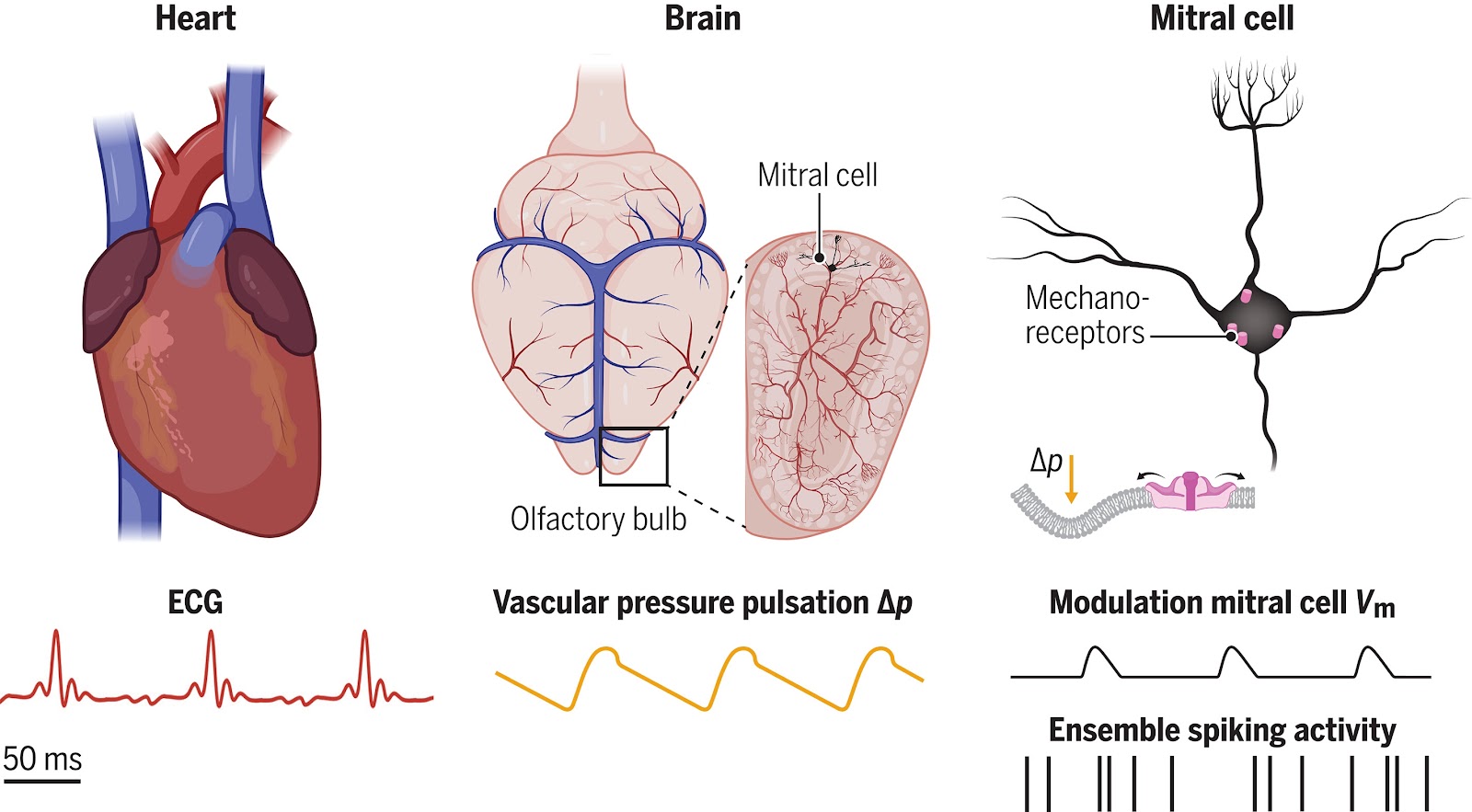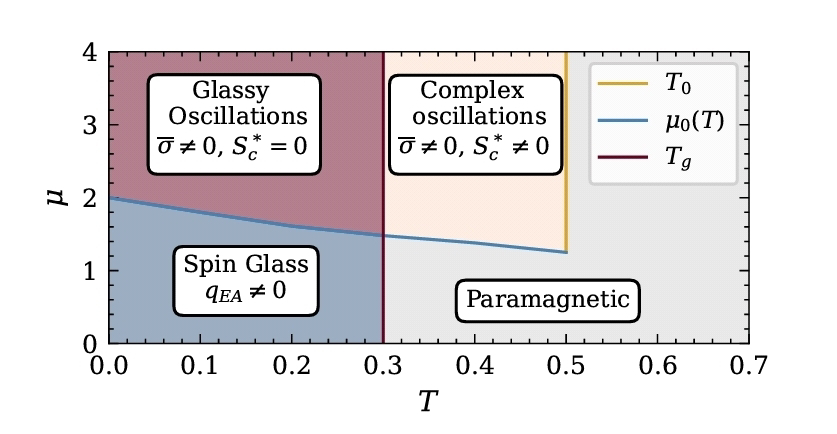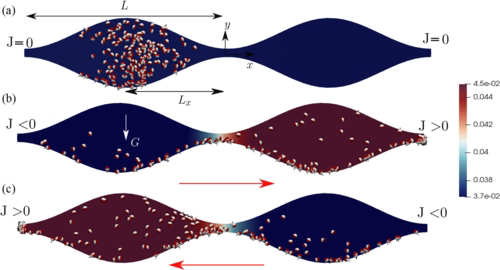Translate
giovedì 23 marzo 2023
# gst: apropos of weakly coupled oscillators, a new approach to depict about their spontaneous stochastic activities
venerdì 9 maggio 2025
# gst: emergent oscillations and chaos in noncompliant microfluidic networks.
sabato 13 gennaio 2018
# brain: rhythm-regulation and plasticity through oscillations
<< During inattentive wakefulness and non-rapid eye movement (NREM) sleep, the neocortex and thalamus cooperatively engage in rhythmic activities >>
<< thalamic oscillations of low-vigilance states have a plasticity function that (..) can shape ongoing oscillations during inattention and NREM sleep and may potentially reconfigure thalamic networks for faithful information processing during attentive wakefulness >>
Vincenzo Crunelli, Magor L. Lorincz, et al. Dual function of thalamic low-vigilance state oscillations: rhythm-regulation and plasticity. Nature Reviews Neurosci doi: 10.1038/nrn.2017.151. Jan 11, 2018
venerdì 19 novembre 2021
# gst: apropos of oscillations, viscous streaming around an immersed microfeature (e.g. a bubble)
sabato 15 dicembre 2018
# gst: the complex world of Bacteria; collective oscillations via discontinuous transitions, chemical quorum sensing and brainlike bursts of electricity to communicate.
<< collective oscillations in cell populations can emerge suddenly with nonzero amplitude via a discontinuous transition. >>
Rosa Martinez-Corral, Jintao Liu, et al. Bistable emergence of oscillations in growing Bacillus subtilis biofilms. PNAS Sep 4, 2018; 115 (36) E8333-E8340. doi: 10.1073/pnas.1805004115
https://www.pnas.org/content/115/36/E8333
<< As in all communities, cohabiting bacteria need ways to exchange messages. Biologists have known for decades that bacteria can use chemical cues to coordinate their behavior. >>
AA << are now finding that bacteria in biofilms can also talk to one another electrically. Biofilms appear to use electrically charged particles to organize and synchronize activities across large expanses. This electrical exchange has proved so powerful that biofilms even use it to recruit new bacteria from their surroundings, and to negotiate with neighboring biofilms for their mutual well-being. >>
<< Step by step we find that all the things we think bacteria don’t do, they actually do, [..] It’s displacing us from our pedestal. >> Ned Wingreen.
Gabriel Popkin. Bacteria Use Brainlike Bursts of Electricity to Communicate. With electrical signals, cells can organize themselves into complex societies and negotiate with other colonies. Sep 5, 2017
https://twitter.com/QuantaMagazine/status/1071417372500783104
https://www.quantamagazine.org/bacteria-use-brainlike-bursts-of-electricity-to-communicate-20170905/
Also
Gurol M. Suel publ.
http://labs.biology.ucsd.edu/suel/index.html
FonT
intrigante qui l'idea di una Intelligenza Artificiale che, dalle relativamente comode e veloci osservazioni sull'evoluzione di colonie batteriche sotto differenti condizioni, sia in grado di circoscrivere pattern comportamentali di interesse per la modellizzazione (e previsione) di comunita' altre ...
giovedì 28 settembre 2023
# gst: reconfiguration and oscillations of sheets subject to vortex
mercoledì 22 ottobre 2025
# gst: triadic percolation on multilayer networks.
martedì 13 febbraio 2024
# brain: arterial pressure pulsations could modulate neuronal activity.
lunedì 8 novembre 2021
# geo: apropos of oscillations, a 'true polar wander' (TPW); Earth tip on its side 84 Ma ago.
venerdì 6 dicembre 2024
# gst: anomalous oscillation modes of (superfluid) pendant droplets; horizontal translation on a flat surface, bouncing off at the corner and vertical oscillations at the edge.
mercoledì 4 giugno 2025
# gst: disorder, chimera state, traveling chimera state, and synchronization by weak temporal couplings.
sabato 20 gennaio 2018
# gst: chaotic dynamics in the transition between sleep and wakefulness
AA << have investigated how to describe one of the most significant state changes in the brain, namely the transition between sleep and wakefulness >>
<< The brain's neuronal activity depends on the overall state we are in (deep sleep, light sleep, sedentary awake or awake and active), and this is important for how sensory impressions are processed >>
Niels Bohr Institute. Chaos in the transition from sleep to awake. Dec 15, 2017.
https://m.medicalxpress.com/news/2017-12-chaos-transition.html
AA << find that sleep is governed by stable, self-sustained oscillations in neuronal firing patterns, whereas the quiet awake state and active awake state are both governed by irregular oscillations and chaotic dynamics; transitions between these separable awake states are prompted by ionic changes. Although waking is indicative of a shift from stable to chaotic neuronal firing patterns, [AA] illustrate that the properties of chaotic dynamics ensure that the transition between states is smooth and robust to noise >>
Rune Rasmussen, Mogens H. Jensen, Mathias L. Heltberg. Chaotic Dynamics Mediate Brain State Transitions, Driven by Changes in Extracellular Ion Concentrations.
Cell Systems. 2017; 5 (6): 591 - 603.e4. doi: 10.1016/j.cels.2017.11.011. Dec 13, 2017.
http://www.cell.com/cell-systems/fulltext/S2405-4712(17)30539-2
venerdì 13 giugno 2025
# gst: self-organization to multicriticality; when a system can self-organize to a new type of phase transition while staying on the verge of another.
martedì 24 giugno 2025
# gst: far-from-equilibrium complex landscapes
venerdì 22 novembre 2024
# gst: protected chaos in a topological lattice.
venerdì 11 agosto 2023
# gst: stochastic resonance mediated by optimal noise level values; transport of colloidal particles induced by substrate concentration oscillations.
sabato 3 settembre 2022
# gst: apropos of vibrating pivots, driving a damped coplanar double pendulum.
giovedì 23 novembre 2023
# gst: kirigami exposed to external flows.
sabato 24 agosto 2019
# gst: active drops: from steady to chaotic self-propulsion
<< Individual chemically active drops suspended in a surfactant solution were observed to self-propel spontaneously with straight, helical, or chaotic trajectories. (..) strong advection (e.g., large droplet size) may destabilize a steadily self-propelling drop; once destabilized, the droplet spontaneously stops and a symmetric extensile flow emerges. If advection is strengthened even further in comparison with molecular diffusion, the droplet may perform chaotic oscillations. >>
Matvey Morozov, Sebastien Michelin. Nonlinear dynamics of a chemically-active drop: From steady to chaotic self-propulsion. J. Chem. Phys. 150, 044110 (2019). doi: 10.1063/1.5080539. Jan 31, 2019. https://aip.scitation.org/doi/10.1063/1.5080539









